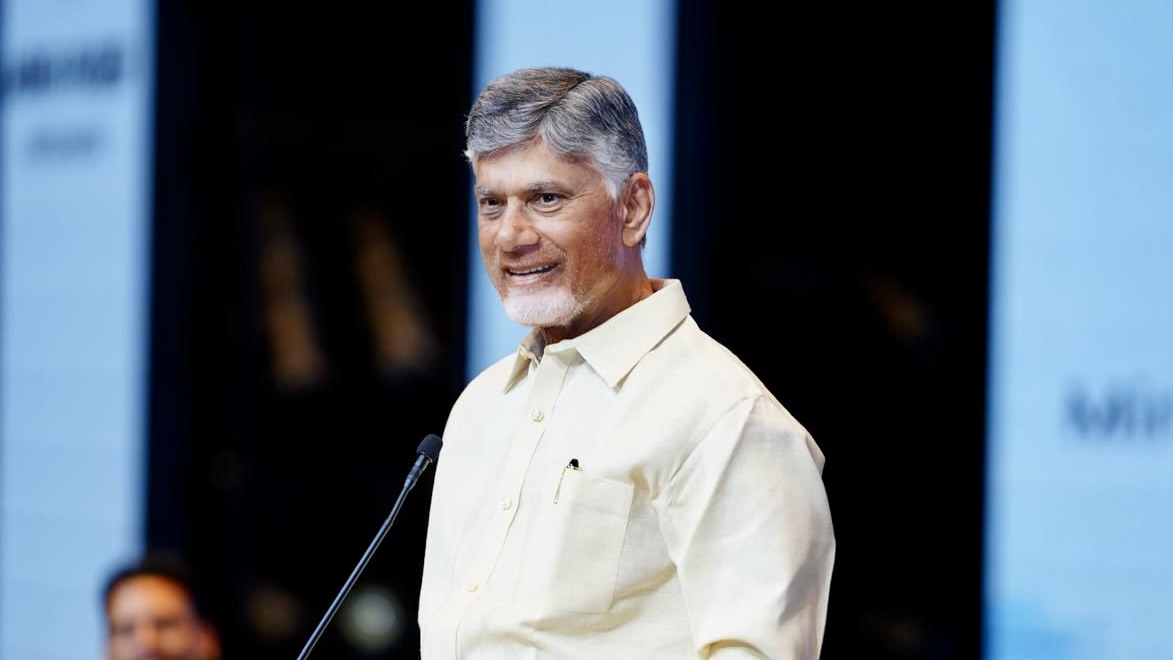Rayalaseema’s rocky, hilly terrain has long demanded a district structured for horticulture, tribal welfare, and cross-border connectivity.
Published Nov 26, 2025 | 5:37 PM ⚊ Updated Nov 26, 2025 | 5:37 PM

Andhra Pradesh Chief Minister N Chandrababu Naidu
Synopsis: Andhra Pradesh CM N Chandrababu Naidu approved three new districts—Polavaram, Markapuram, and Madanapalle—raising the total to 29, plus five new revenue divisions. Aimed at better tribal welfare, drought-prone areas, and local governance, the changes, based on GoM recommendations, will be cabinet-approved on 28 November and effective from January 2026.
Andhra Pradesh Chief Minister N Chandrababu NaiduAndhra Pradesh Chief Minister N Chandrababu NaiduRedrawing Andhra Pradesh’s governance map, Chief Minister N. Chandrababu Naidu has approved the formation of three new districts—Polavaram (with headquarters at Rampachodavaram), Markapuram, and Madanapalle—taking the state’s tally from 26 to 29.
Announced after a high-level meeting on Tuesday, 25 November with the members of the Group of Ministers, the move is seen as an attempt to plug long-standing regional gaps and give rural administration a new shot in the arm.
The government has also cleared five new revenue divisions and several mandal-level reorganisations, signalling an attempt to streamline governance.
The decisions were based on recommendations from the seven-member Group of Ministers (GoM) headed by Revenue Minister Anagani Satya Prasad, with Deputy Chief Minister Pawan Kalyan and Home Minister V Anitha among its members. With the creation of five divisions, the total number is now set to increase to 82 from 77.
The decisions are likely to be approved by the state cabinet on 28 November. Then a notification will be issued to this effect, seeking objections. A gazette notification will be issued by the end of December 2025.
Formed in July 2025, the GoM was tasked with rationalising district limits by studying population density, geographical contiguity, administrative ease, and above all, the impact of displacement due to the Polavaram irrigation project.
Naidu, while clearing the formation of new districts, took a swipe at the previous YSR Congress Party (YSRCP) government’s 2022 district reorganisation, calling it “ill-conceived” and “uneven,” adding that the new plan would be “people-centric from the word go.”
“This restructuring will empower local governance, especially in tribal and drought-prone belts, and prepare the ground for future Assembly delimitation,” the Chief Minister said. The changes are expected to come into effect by January 2026, pending legislative approval and public consultations.
Each of the newly approved districts has been carved with a specific development rationale, backed by 2011 Census figures and recent socio-economic studies.
Carved from: Alluri Sitharama Raju district
Population: About 3.49 lakh, predominantly tribal
Revenue Divisions: Rampachodavaram and Chinturu
This district squarely targets the rehabilitation needs of Polavaram project-hit villages. Naidu asked for a fresh study on revenue wards and constituencies impacted by submergence. For a region long left high and dry, the new district could turn out to be some kind of consolation.
Carved from: Prakasam district
Population: About 11.42 lakh
Revenue Divisions: Markapuram and Kanigiri
For over twenty years, residents of western Prakasam have been demanding a district that speaks to their needs—especially in drought-stricken farming belts where groundwater is perennially scarce. The creation of Markapuram district is expected to ease access to welfare schemes, crop insurance, and new industrial corridors.
Carved from: Annamayya district
Population: About 11.05 lakh
Revenue Divisions: Madanapalle, Peeleru
Rayalaseema’s rocky, hilly terrain has long demanded a district structured for horticulture, tribal welfare, and cross-border connectivity. Famous for apples and mangoes, Madanapalle is poised to become a horticultural hub. With improved roads to Bengaluru and strengthened border check-posts, the district could open new trade channels.
Nakkapalli (Anakapalli): Focus on port connectivity, fisheries, and coastal development.
Addanki (Prakasam): Streamlines services across agrarian mandals, improving irrigation.
Peeleru (Madanapalle): Boosts administration in hill tracts, aiding tribal welfare and soil conservation.
Banaganapalle (Nandyal): Supports drought mitigation, sericulture, and the region’s granite industry.
Madakasira (Sri Sathya Sai): Strengthens border management with Karnataka and livestock development.
Officials say these divisions will reduce the workload on district collectors, improve land-related services, and speed up grievance redressal through digital platforms. For rural families tired of running from pillar to post for basic documentation, this change could be a game-changer.
Predictably, the political waters have been stirred. TDP allies Jana Sena and BJP celebrated the decision as a “promise delivered,” with Pawan Kalyan declaring on social media: “Decentralisation for the common man—Naidu garu delivers!”
The YSRCP, meanwhile, was quick to pour cold water on the move. Former Chief Minister Y.S. Jagan Mohan Reddy called the reorganisation “superficial tinkering,” accusing the government of overlooking Visakhapatnam’s aspirations to become the state capital.
Public consultations will unfold through December. Environmental approvals are still needed for Polavaram-linked reshuffles, especially in submergence-affected mandals.
(Edited by Amit Vasudev)
